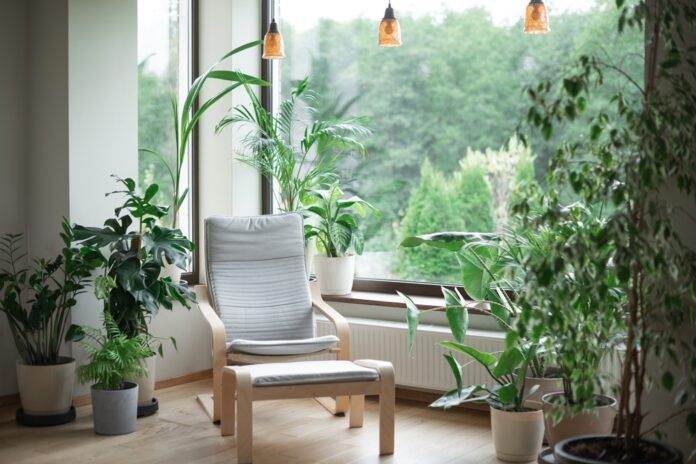In recent years, there has been a growing awareness of the impact our choices have on the environment. As a result, many people are seeking ways to make their homes more sustainable and eco-friendly. Incorporating eco-friendly decor not only helps the planet but also creates a healthier living environment. Here are some of the best ways to transform your space with sustainability in mind.
1. Choose Sustainable Materials
One of the most effective ways to make your home eco-friendly is by selecting decor made from sustainable materials. Opt for items crafted from reclaimed wood, bamboo, cork, or organic cotton. These materials reduce waste and are often more durable, saving you money in the long run. For example, using reclaimed wood for furniture or decorative pieces can add rustic charm to your home while promoting sustainability.
2. Embrace Upcycling and Recycling
Upcycling old items or purchasing second-hand decor from thrift stores reduces the demand for new resources and gives a unique touch to your home. Shopping at places like Habitat for Humanity ReStores allows you to find affordable, eco-friendly home goods while supporting a good cause. This approach promotes eco-conscious living by encouraging the reuse and recycling of items, thereby reducing waste.
3. Use Low-VOC Paints
Traditional paints can release volatile organic compounds (VOCs) into the air, which are harmful to both the environment and your health. Opt for low-VOC or zero-VOC paints to improve indoor air quality. Companies like Healthier Homes specialize in products that avoid harmful chemicals like VOCs, ensuring a safer living environment.
4. Incorporate Natural Elements
Bringing nature indoors enhances the aesthetic of your home and improves air quality. Indoor plants can purify the air and create a calming atmosphere. Additionally, using natural fabrics like organic cotton and linen for textiles adds to the eco-friendly vibe.
5. Switch to Energy-Efficient Lighting
Lighting plays a significant role in both the functionality and ambiance of your home. Use LED bulbs, install dimmers or consider solar-powered lights to reduce electricity consumption while maintaining aesthetic appeal. Sustainable lighting practices not only cut down energy usage but also reduce your electricity bills.
6. Adopt a Minimalist Approach
Adopting a minimalist design reduces your carbon footprint by decluttering and focusing on essential items. This approach encourages using recycled materials and choosing quality over quantity. A minimalist style often results in a clean, tranquil space that is both functional and environmentally friendly.
7. Support Fair Trade and Artisan Communities
Supporting artisans and fair-trade practices is a great way to incorporate sustainability into your decor. By purchasing handmade textiles and accessories, you not only obtain unique, high-quality items but also contribute to the livelihoods of communities committed to sustainable practices.
8. Opt for Non-Toxic Furniture
Many conventional furniture pieces are made using materials and finishes that release harmful chemicals into your home. Avoid furniture made with MDF and solvent-based finishes, as they can off-gas harmful substances. Instead, choose items made from solid wood or metal, which are more durable and environmentally friendly.
9. Use Natural Candles
Traditional candles can contain toxins that are released when burned. Opt for natural candles made from soy, beeswax, or plant wax to avoid exposure to these harmful substances. Natural candles are a healthier choice and often burn longer than conventional ones.
10. Incorporate Eco-Friendly Decor Accessories
Accessorize your home with items made from natural, sustainable materials. Consider incorporating ceramic pieces made from natural materials, as they have a minimal environmental impact. These pieces add a touch of elegance while aligning with eco-friendly principles.
Conclusion
Making your home eco-friendly doesn’t have to be overwhelming. By implementing these simple tips, you can create a sustainable living space that’s not only good for the planet but also beneficial for your health and well-being. Small changes can make a big difference, and together, we can contribute to a more sustainable future.


